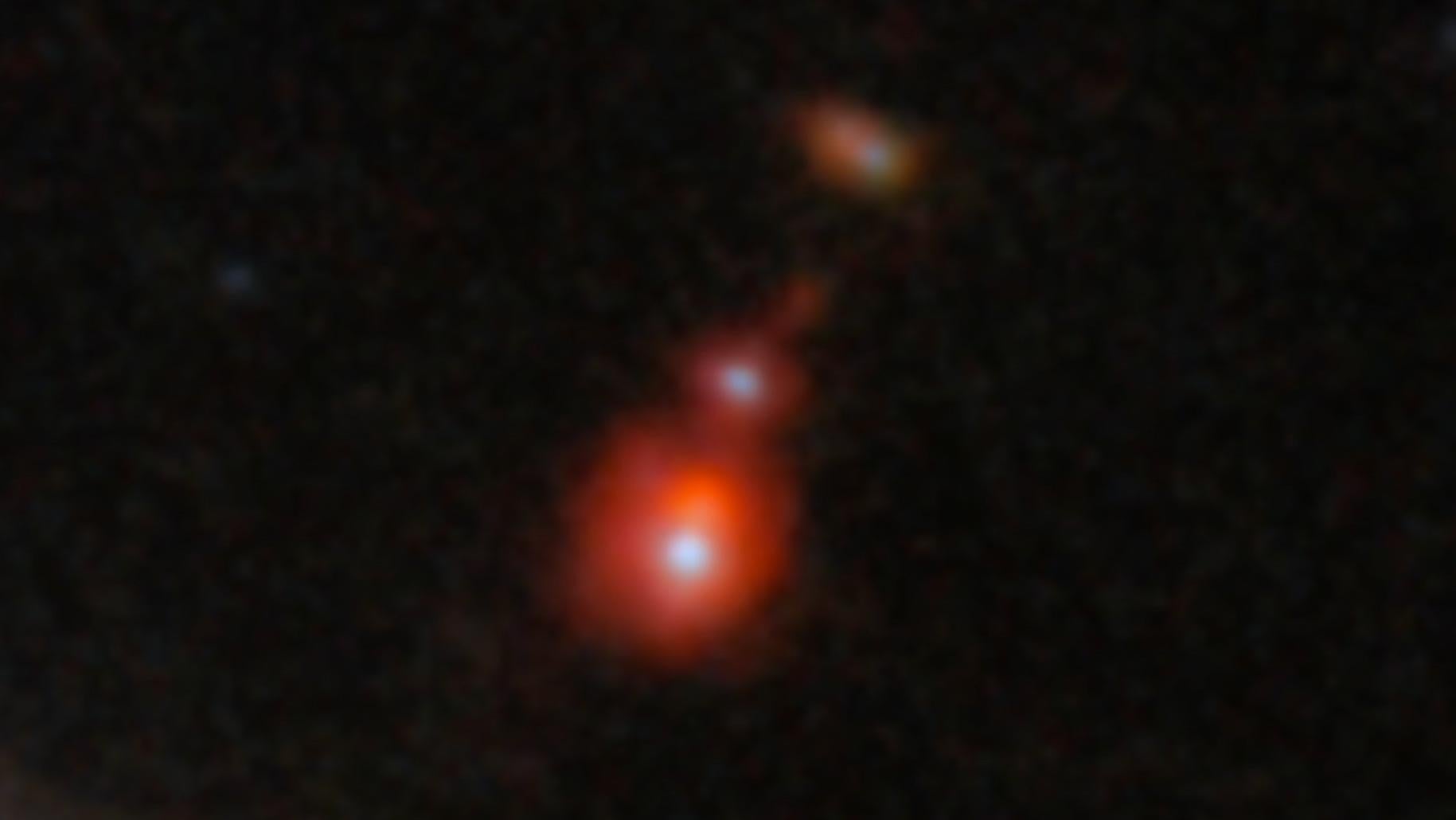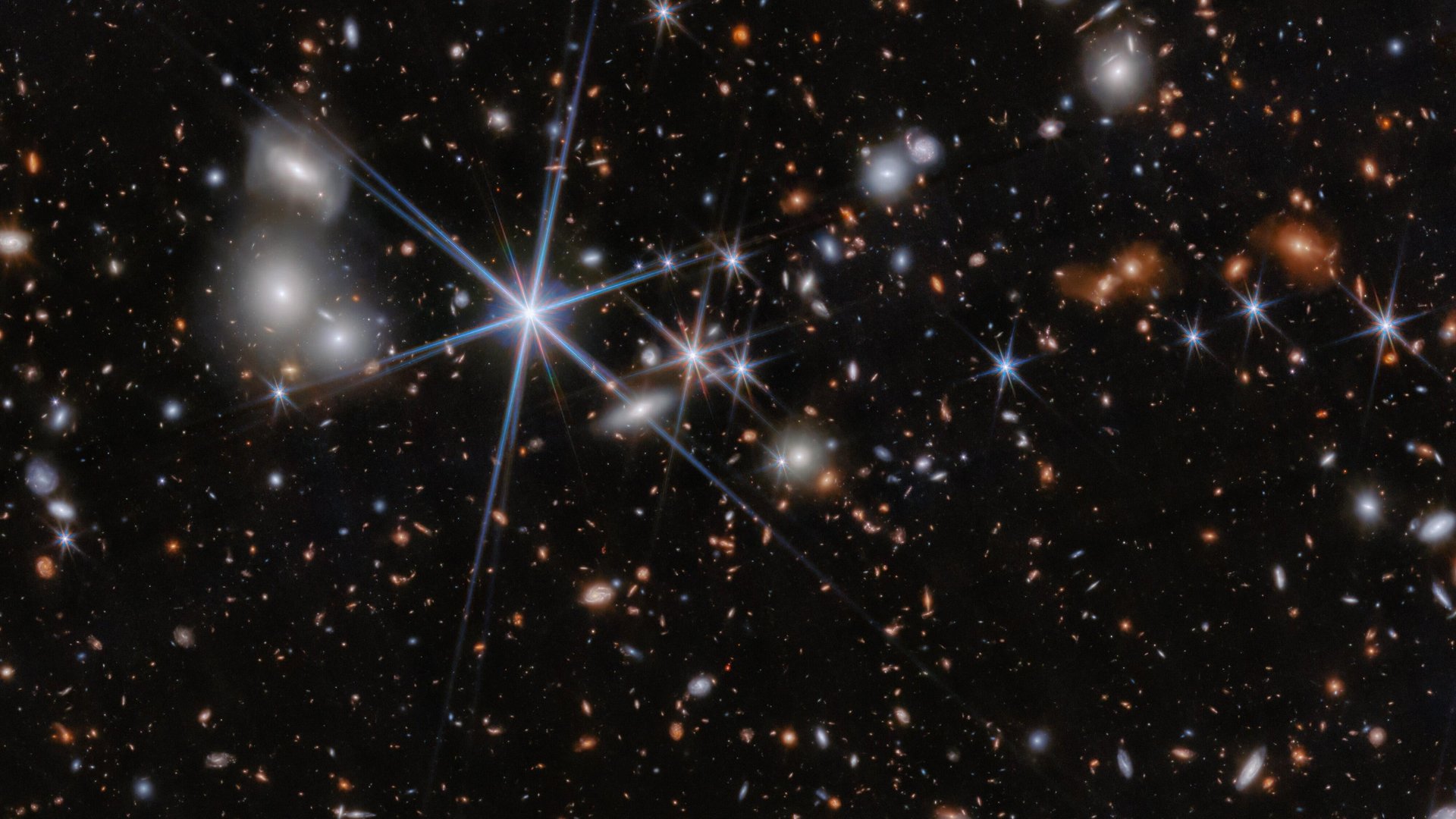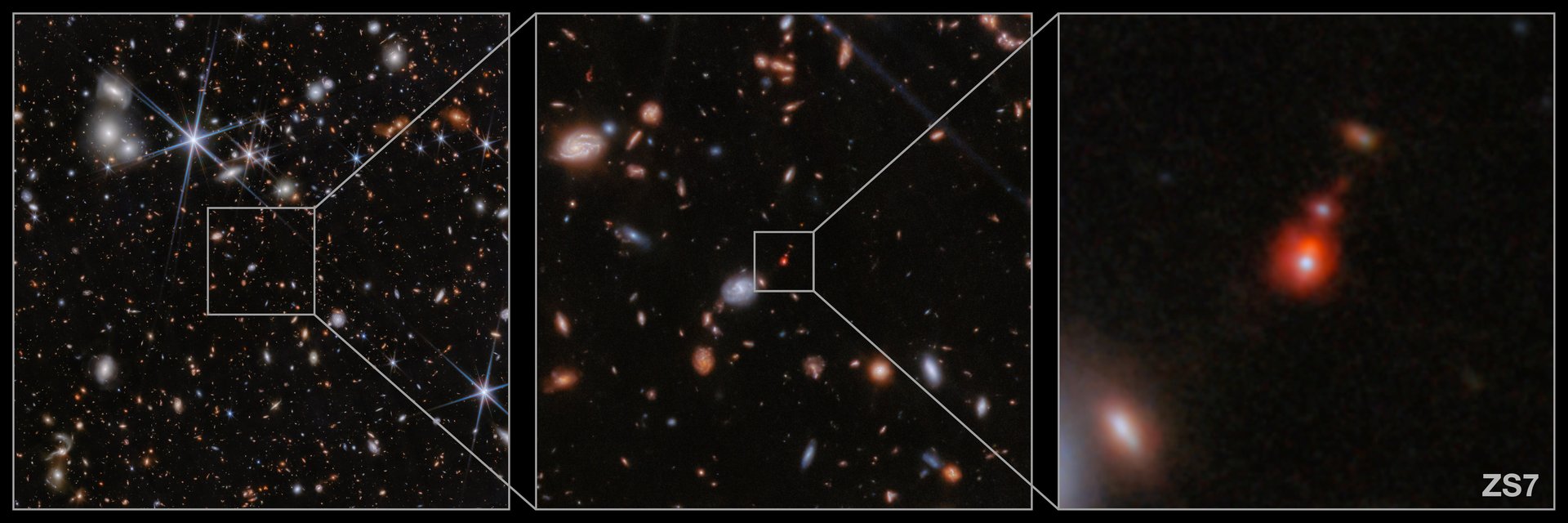The Webb telescope saw a black hole collision from so long ago it happened shortly after the Big Bang
The event, which occurred when the universe was 740 million years young, gives scientists a clue about the number of light black holes in the universe

The cutting-edge Webb Space Telescope has spotted the most distant black hole merger yet, which occurred when the universe was just 740 million years old. It’s the first time astronomers have seen a merger so early in the universe’s history, making it a record breaker.
Suggested Reading
Black holes are massive objects peppered throughout our universe; their gravitational fields are so strong that not even light can escape their event horizons. Black hole mergers are exactly what they sound like: Slow, dreadful dances between two of the objects, often at the center of their respective galaxies, eventually coalescing into a single object.
Related Content
The recent merger observation was made by an astronomical team in May 2023 using the Webb Telescope’s NIRSpec-IFU instrument. The cosmic meeting of holes occurred when the universe was about three-quarters of a billion years old (for reference, the universe is now 13 billion years older than that!), in a galaxy system called ZS7.

The merger was spotted thanks to spectrographic features of accreting black holes — ones that are actively intaking material — that are not visible to ground-based telescopes. Thankfully, Webb is at L2, a region of space 1 million miles from Earth, from where it can peer even deeper into the universe.
“Our findings suggest that merging is an important route through which black holes can rapidly grow, even at cosmic dawn,” said Hannah Übler, an astronomer at the University of Cambridge and the study’s lead author, in an ESA release. “Together with other Webb findings of active, massive black holes in the distant Universe, our results also show that massive black holes have been shaping the evolution of galaxies from the very beginning.”

Webb’s vision is so sharp that the team was able to spatially separate the two black holes, revealing some of their physical characteristics. One of the holes is about 50 million times the mass of the Sun, while the other is obscured in a dense cloud of gas. The team’s full paper on the discovery was published today in the Monthly Notices of the Royal Astronomical Society.
As black holes merge, they send out gravitational shockwaves that squeeze and stretch spacetime over billions of light-years. These waves are detected by observatories like those managed by the LIGO-Virgo-KAGRA Collaboration, part of which first detected gravitational waves back in 2015.
However, there’s a brighter future on the horizon for understanding the gravitational universe. ESA formally adopted the Laser Interferometer Space Antenna (LISA), a space-based gravitational wave observatory, in January, paving the way for the spacecraft’s eventual launch and operation.
“Webb’s results are telling us that lighter systems detectable by LISA should be far more frequent than previously assumed,” said Nora Luetzgendorf, LISA’s lead project scientist at the European Space Agency, in the same release. “It will most likely make us adjust our models for LISA rates in this mass range. This is just the tip of the iceberg.”
Taken together, the next generation of space telescopes is revealing the earliest black holes, but also their frequency in the universe. Unlocking the enigmas of black holes — how they grow, and interact with and shape their surrounding regions — will help astrophysicists understand some of the universe’s most fundamental mysteries.
